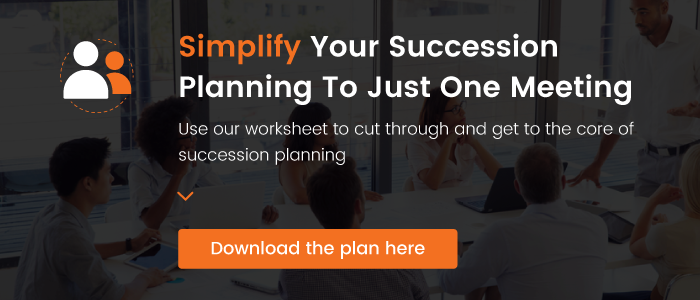09th May 2017
The three biggest challenges in succession planning (and how to overcome them)
Imagine your company has had the same stable leadership for nearly 20 years. Everything’s been heading in the right direction, until your leader decides to step down.
Do you keep running things the way they’ve already been going? Or is time for a change? Do you promote internally, or look for talent elsewhere? When should you start planning the succession?
All leaders have their own unique style, with no two executives ever running things exactly the same way. But this doesn’t need to be an issue. If the succession is managed smoothly, switching between leaders can be a beneficial process for everyone involved, especially the company and its stakeholders.
3 biggest challenges in succession planning
Large or small, every organisation faces similar challenges in succession planning. They can range from problematic finer points to major structural issues. Read on to find out about the most common succession planning challenges, and strategies to combat them.
1. Deciding who to promote
While someone might be gun at their particular level or position, that might not necessarily mean they’ve got the skills or talents needed to take the next step up the ladder.
The pressure to reward loyalty or hard work with a promotion can be intense, and no one likes hurt feelings or stepped on toes. But with careful planning, it is possible to put the right person in the role without upsetting your other candidates.
Identifying potential candidates early in the succession planning process and proactively arranging appropriate learning and development courses is one possible solution to this pain point.
2. Resisting bias
People find comfort in familiarity, and hiring managers and executives are no exception. Some men naturally lean toward men, some women lean towards women and vice versa. The temptation to hire someone that fits a certain stereotype can override logical, skill based thought processes.
Planning ahead to identify characteristics required for a successor will ensure the candidate with skills best suited to the job(beyond their age, gender and background) will be hired.
3. Maintaining company morale
One of the side-effects of succession is the negative impact it can have on company morale. Deep down, everyone worries about retirement, or redundancy. And the taboo of talking about moving on in one way or another can impede open discussion and threaten the importance placed on succession planning in organisations.
To be effective succession planning needs to be a simple, open process. Every organisation should openly discuss who’s taking the reins next.
Craft a simple succession plan
A change in leadership doesn’t need to cost the Earth or grind productivity to a halt. The more effectively a succession is planned, the more economical it will be, as disruption is minimised and business can continue running smoothly. Employing a smart succession planning model can save your company thousands in the long run.
People are complicated, and that can make planning a succession complicated too. Balancing everyone’s career goals with what’s best for the business, keeping the right people in the loop and ensuring that the succession planning process is fair and objective can sometimes require more resources than your company can spare.
It is important to keep the succession planning processsimple for an effective succession that minimises any negative imapct on your bottom line.
Use our One Question Succession Plan to simplify your succession planning model and help your company grow in the right direction.
Categories: Acquiring Talent Developing Leaders




